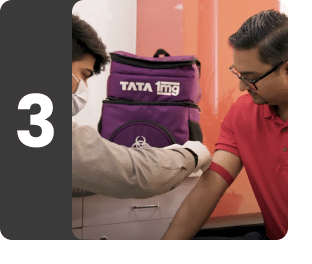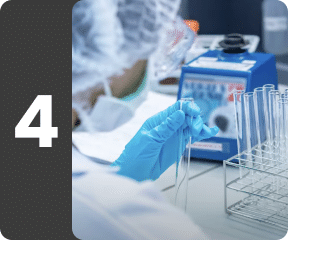LH & Testosterone Total near me in Allahabad
Understanding LH & Testosterone Total in Allahabad
What is LH & Testosterone Total in Allahabad?
LH & Testosterone test is used for evaluation of hypogonadism, in the prediction of ovulation, evaluation of Infertility and diagnosing Pituitary disorders. Lh & Testosterone test can also help to evaluate conditions like loss of libido, Gynecomastia and erectile dysfunction.
What does LH & Testosterone Total measure?
Contains 2 testsThe LH test detects the levels of luteinising hormone in the blood. This test is done to evaluate:
-To evaluate the function of reproductive organs (ovaries or testicles)
-To evaluate infertility issues in females
-To assess the irregular menstrual cycle in women
--To diagnose disorders of the pituitary gland or diseases involving the ovaries in women
-To evaluate early or delayed sexual maturation (puberty) in children
-To evaluate low sperm count in men
-To assess hypogonadism or gonadal failure in men
In men, testosterone test is carried out when:
-Infertility is suspected
-If you have a decreased sex drive or erectile dysfunction.
It is also useful in diagnosing delayed or slowly progressing puberty, or very early pubertyGrowth of testicles and penis

Luteinising Hormone
Luteinizing hormone is associated with reproduction and ovulation. In females, it stimulates the release of an egg from the ovary. However, in males, testosterone production is dependent on LH. This test helps in measuring the amount of LH present in the blood.
LH is produced by the pituitary gland, and its production is controlled by the hypothalamus, pituitary gland, and the hormones produced by the ovaries (in women) or testicles (in men).
In premenopausal women, LH stimulates ovulation and the production of other hormones, estradiol, and progesterone. The menstrual cycle is divided into 2 phases, follicular and luteal phases, each of these last for about 14 days. Near the end of the follicular phase, there is a mid-cycle increase in follicle-stimulating hormone (FSH) and LH. This triggers ovulation. During the luteal phase, LH secretion stimulates the corpus luteum to start producing progesterone. At this point, FSH and LH levels get reduced, while progesterone and estradiol concentrations rise. If the egg is not fertilized, then the levels of these hormones fall after several days followed by the beginning of the next menstrual cycle. With the onset of menopause ovarian function reduces and eventually discontinues, which results in increased levels of FSH and LH.
In men, LH stimulates Leydig cells in the testicles to produce testosterone. However, LH levels remain relatively constant in men after puberty. A high testosterone level provides negative feedback to the pituitary gland and the hypothalamus, thus decreasing the amount of LH secreted.
In infants and children, LH levels rise shortly after birth and then fall to very low levels (by 6 months in boys and 1-2 years in girls). At about 6-8 years of age, levels again rise before the beginning of puberty and secondary sexual characteristics development.
Know more about Luteinising Hormone

Testosterone Total
Testosterone is a sex hormone which is mainly found in men. It can also be found in women but in small amounts. The appearance of male physical characteristics is due to testosterone hormone. Testosterone Total measures the levels of testosterone in the blood.
In men, testosterone is produced by the Leydig cells present in the testicles. It is also produced by the adrenal glands in both males and females. In females, small amounts of testosterone are produced by the ovaries.
The function of testosterone is to develop secondary sex characteristics which include enlargement of the penis, body hair growth, development of muscle, and deepening of the voice. During puberty, it is produced in large amounts in males. In adult males, its function is to regulate the sex drive and to maintain muscle mass. In adult females, the testosterone gets converted to estradiol, which is the main sex hormone in females.
The testosterone hormone production is regulated by luteinizing hormone (LH), which is produced by the pituitary gland. As the levels of testosterone rise, the production of LH decreases which in turn slows down the production of testosterone. Similarly, when the levels of testosterone fall, it leads to an increase in production of LH which stimulates testosterone production.
The levels of testosterone are highest in the early morning and lowest in the evening. With exercise, the levels of testosterone increase and with age the levels decrease.
In the blood, about two-thirds of testosterone hormone is bound to sex-hormone binding globulin (SHBG) and about one-third is bound to albumin. A small amount is present as free testosterone.
Know more about Testosterone Total
Book a LH & Testosterone Total test at home near me





Other tests









